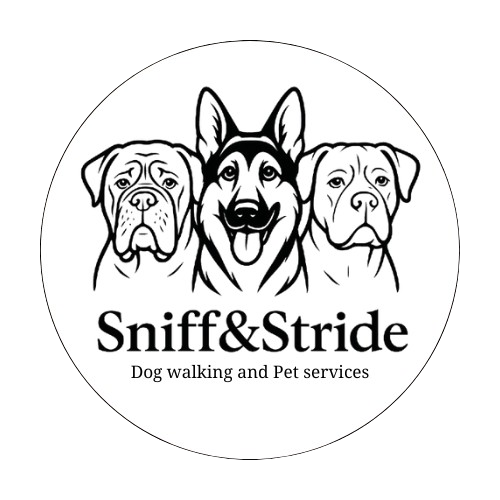
What is too hot for your dog?
Hot or Not? Understanding Safe Temperatures for Walking Your Dog
We all love taking our dogs out for a walk, whether it's a brisk morning stroll or an adventurous hike. But as the weather changes, especially as we head into warmer months in Sheffield and beyond, it's vital to remember that not all temperatures are created equal for our canine companions.
Dogs don't cool down like humans do. While we sweat all over, dogs primarily pant and sweat through their paw pads. This makes them much more susceptible to overheating and the very real danger of heatstroke. Here at [Your Business Name], your dog's safety and well-being are our top priority, so let's talk about what temperatures are safe for your dog and when it's best to stay indoors.
The Pavement Test: Your First Line of Defence
Before we dive into specific air temperatures, always remember the "seven-second pavement test":
Place the back of your hand on the pavement, asphalt, or any dark surface your dog will be walking on. If you can't comfortably hold it there for seven seconds, it's too hot for your dog's paws. These surfaces absorb and retain heat much more than the air, leading to painful burns on sensitive paw pads.
Temperature Tiers: What's Safe and What's Not?
It's important to remember that these are general guidelines. Factors like your dog's breed (e.g., flat-faced breeds like Pugs and Bulldogs are more vulnerable), age (very young or elderly dogs), weight, coat thickness, and overall health will also influence their heat tolerance. Always observe your dog for any signs of discomfort.
1. Below 12°C (Below 54°F): Perfect Walking Weather! This is generally ideal for most dogs. Enjoy your walks without too many concerns about overheating.
2. 12°C - 19°C (54°F - 66°F): Generally Safe, but Be Mindful. Most dogs are comfortable in this range. However, if your dog is particularly energetic or a breed prone to overheating, keep an eye out for excessive panting. Long, strenuous walks might still warrant carrying water.
3. 20°C - 23°C (68°F - 73°F): Proceed with Caution. This is where you need to start taking precautions.
-
Stick to shaded areas: Prioritise routes with trees or buildings providing shade.
-
Keep walks short: Reduce the duration of your walks significantly.
-
Bring water: Always carry fresh water for your dog and offer it frequently.
-
Avoid vigorous exercise: No long runs or intense play.
4. 24°C - 26°C (75°F - 79°F): Risky Territory – Extreme Caution Advised. At these temperatures, the risk of heatstroke increases significantly for all dogs.
-
Walks are generally not recommended. If absolutely necessary, keep it to a very quick, essential toilet break in the shadiest spot possible.
-
Focus on early morning or late evening: Only venture out when temperatures are at their absolute coolest.
5. 27°C (80°F) and Above: Too Dangerous – Stay Indoors! When the mercury climbs this high, it is simply too dangerous to walk your dog. Heatstroke can occur rapidly and be fatal.
-
Prioritise indoor activities: Engage your dog with mental stimulation, training, or short bursts of play in an air-conditioned or naturally cool environment.
-
Provide cool resting spots: Offer cooling mats, damp towels, or access to tiled floors.
-
Never, EVER leave your dog in a car: Even with windows cracked, temperatures inside a car can skyrocket in minutes, becoming a death trap.
Recognizing the Signs of Heatstroke
It's crucial to know the symptoms of heatstroke so you can act quickly:
-
Excessive panting (more than usual or heavy, laboured breathing)
-
Dark red or purple gums
-
Increased drooling or thick, ropy saliva
-
Lethargy, weakness, or unsteadiness
-
Vomiting or diarrhea
-
Dizziness or confusion
-
Collapse or seizures
If you suspect heatstroke, seek immediate veterinary attention. While on the way to the vet, try to cool your dog down with cool (not ice cold) water on their fur, especially on their ears, paws, and underbelly.
